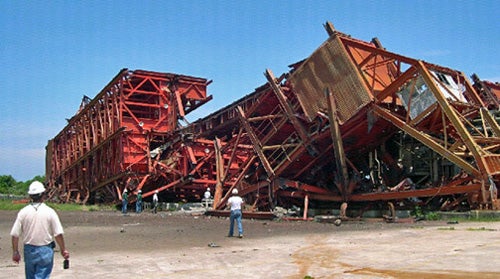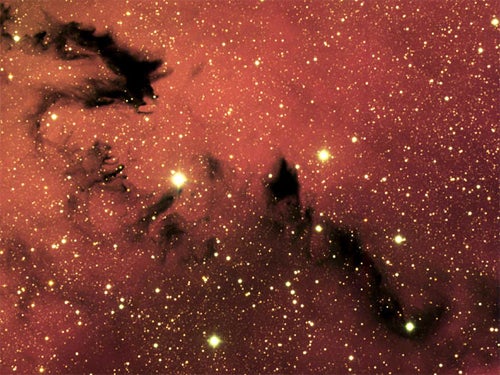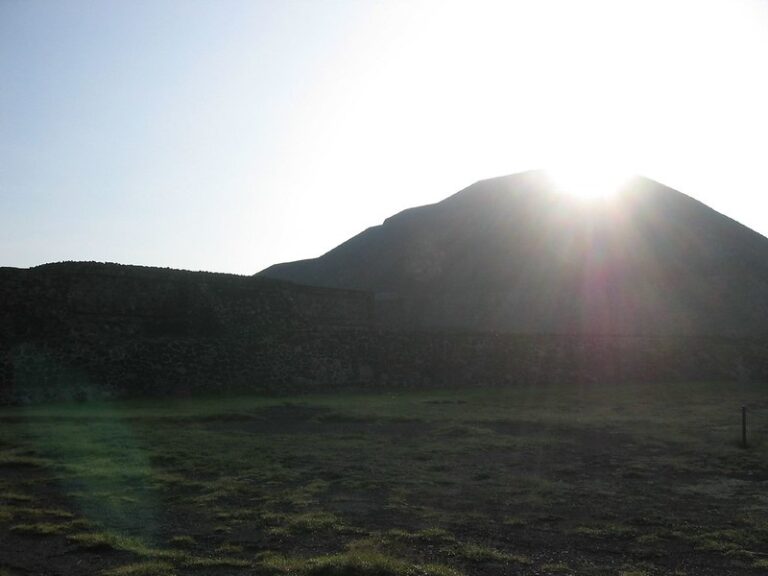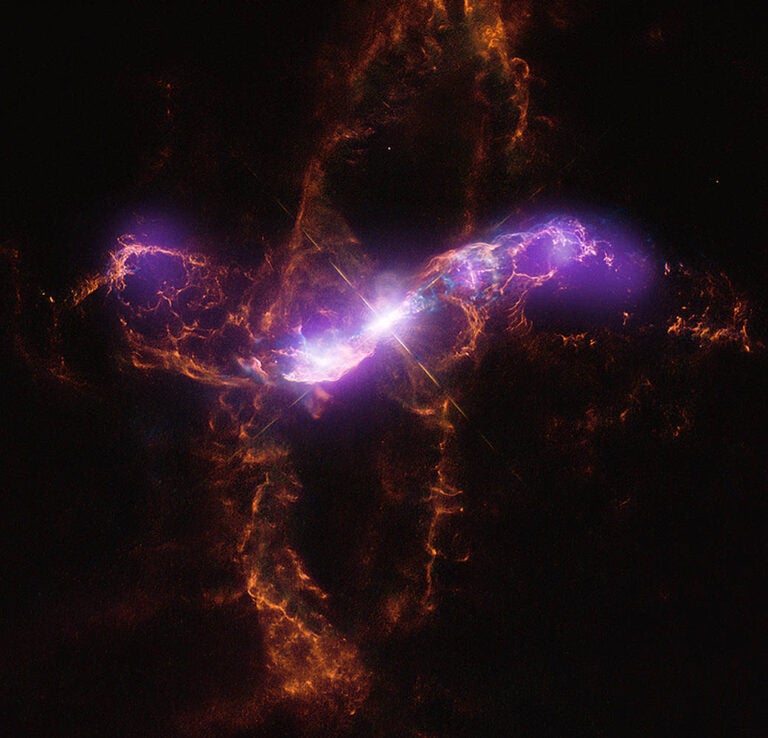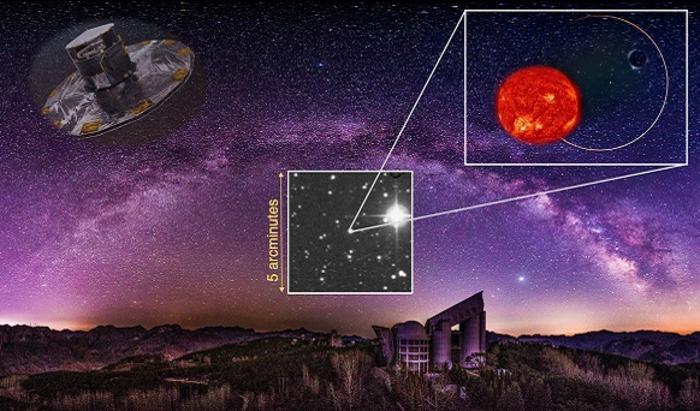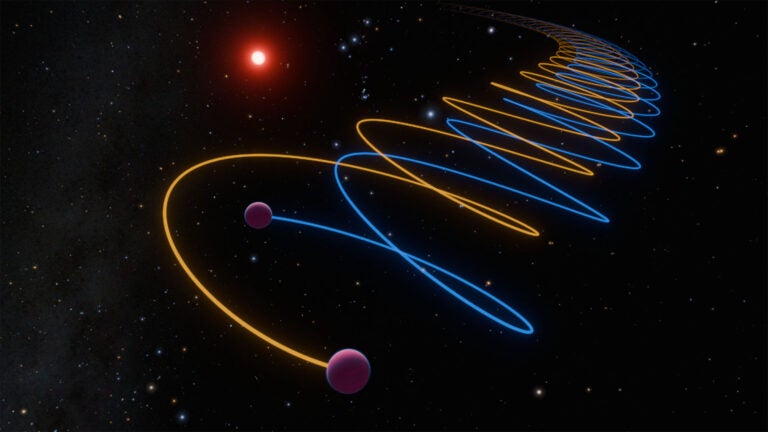Planet, schmanet?
Nothing seems to have stirred the International Astronomical Union (IAU) to define a planet quite like Caltech astronomer Mike Brown’s July 29 declaration that a new object his team discovered should be considered a tenth planet. The object, temporarily known as 2003 UB313 and nicknamed “Xena” by Brown and his colleagues, is larger than Pluto.
On August 4, the IAU said a formal name for the object would not be selected until its planetary status was resolved, but Xena can’t be classed as a planet until an IAU panel proposes a definition for the term. Brown has called this status “committee limbo.”
According to a report in today’s Nature, the panel working on defining “planet” is considering a radical solution: Ditch use of the word entirely unless it’s preceded by some qualifier. But Iwan Williams, the committee’s chair and an astronomer at Queen Mary, University of London, tells Astronomy this isn’t quite the case.
“Nature is premature — the report is not yet submitted,” Williams says. “If any proposal on the lines that Nature suggests does emerge, it would not be to cease to do anything. Simply, that we should define a set of objects — trans-neptunian planets, as opposed to trans-neptunian objects — that have a number of features in common.” — Francis Reddy
Hurricane season affects NASA again
Less than a month after Hurricane Katrina damaged NASA’s Stennis Space Center in southern Mississippi and Michoud Assembly Facility in New Orleans, the space agency is bracing for another storm. With the threat posed by Hurricane Rita to the greater Houston area, NASA closed Johnson Space Center (JSC) today.
JSC manages onboard activity for the International Space Station (ISS). During the closure, ISS’s flight control will move temporarily to the Russian Mission Control Center in Korolev.
While a small emergency team will remain at JSC, the facility will not reopen until Rita has passed. — Jeremy McGovern
Historic launch tower toppled
Engineers destroyed the 1,300-ton mobile service tower at the Cape Canaveral Air Force Station’s Launch Complex 13 August 9. Neglected for 30 years, the tower had begun falling apart on its own and was shedding toxic paint chips onto the soil.
The tower was best known as host of five Lunar Orbiter launches, which imaged 99 percent of the Moon’s surface with a resolution better than 200 feet (60 meters). The tower embraced 46 other Atlas and Atlas/Agena rockets. Following a classified launch April 6, 1978, the Air Force abandoned the facility.
Engineers brought the tower down using 171 pounds (78 kilograms) of explosives. The fallen tower will be cut up and transported to the station’s landfill, where it will be buried in a special cell. — Francis Reddy
Deep Impact’s surprising results
Data collected when NASA’s Deep Impact probe hit Comet Tempel 1 July 4 have confirmed scientists’ ideas about comet structure while providing some new food for thought about how the object formed.
The ingredients that comprise a comet appear to be more varied than anticipated. The Spitzer Space Telescope observed the cloud ejected when the comet and probe collided, and detected clay and carbonates in addition to the expected silicates. The former form only in the presence of liquid water, causing astronomers to ponder how such compounds ended up in a frozen body born in the solar system’s outskirts.
Tempel 1 also appears to have craters — impact scars unseen on the two other comets visited previously by spacecraft, comets Wild 2 and Borrelly. Before impact, scientists were not in complete agreement about the comet’s consistency. It turns out gravity weakly binds together the fine dust grains that comprise the comet’s nucleus, which has a texture resembling a snow bank. So how such craters formed is unclear.
Data from the spacecraft’s infrared spectrometer also allowed researchers to measure how the comet conducts heat. They found the comet’s nucleus is extremely porous, which allows the surface temperature to heat and cool nearly instantly in response to sunlight. The interior, however, is well shielded, perhaps keeping the ice within the nucleus in a deep freeze since the early days of the solar system. — Laura Baird
Hayabusa meets asteroid
After a 27-month journey, Hayabusa arrived at asteroid Itokawa September 12 and is orbiting the body from 12.5 miles (20 kilometers) away. The mission, operated by the Japan Aerospace Exploration Agency (JAXA), has begun its investigation of the asteroid.
The probe, formerly known as Muses-C, will image and survey the asteroid. Hayabusa then will move closer to the body, fire a projectile into it, and gather the expelled fragments. A sample-return capsule will reach Earth in summer 2007.
Should JAXA succeed, this will be the first sample-return mission from an asteroid. NASA’s mission Stardust, scheduled to return to Earth in January 2006, will be the first sample return from a comet.
Hayabusa is Japanese for “falcon,” while the asteroid is named for the late rocketeer Hideo Itokawa, father of Japan’s space program. — Jeremy McGovern
Solar-flare eruption
On September 7, space-based instruments detected the fourth-largest solar flare in the past 15 years, categorized at X17. Three other strong flares followed in its wake. Solar flares, the largest explosions in the solar system, are caused by strong magnetic fields on the Sun.
The X17 flare was spotted on the Sun’s eastern limb, but the activity wasn’t Earth-directed. Nonetheless, the event created a blackout of high-frequency communications on Earth’s daytime side; this may have created problems for emergency workers in the Gulf Coast seeking survivors in the aftermath of Hurricane Katrina.
As the Sun rotates, more effects may become apparent. Auroral activity on Earth could increase when the flares enhance the solar wind, a fast-moving stream of particles constantly flowing from the Sun. Whether this will happen is difficult to say, but scientists believe increased activity for the next 10 days is likely.
Chris Balch of the National Weather Service’s Space Environment Center told Astronomy, “I have seen regions go both ways without any clear reason. I would say that it is definitely a good possibility. As forecasters, we will be anticipating more activity until something provides evidence to the contrary.”
This is the return of a very active sunspot region that provided fireworks in August. — Jeremy McGovern
Enter the dragon
The 8-meter Gemini South Telescope in Chile has imaged NGC 6559, a dark nebula situated in the constellation Sagittarius, about 5,000 light-years away from Earth. Cold, murky dust clouds make NGC 6559 appear like a dragon cutting through interstellar space.
This star-forming region spans 7 light-years. The popular deep-sky observing target M8, the Lagoon Nebula, is less than 1° away from the “dragon.” — Jeremy McGovern
Hurricane Katrina hit two NASA facilities in Mississippi and Louisiana this week. The space agency is now assisting its employees and contractors whose homes were damaged or destroyed by Monday’s storms.
Stennis Space Center in Hancock County, Mississippi, and Michoud Assembly Facility in New Orleans both suffered structural damage and lost electrical power and communication abilities. At Michoud, which builds the shuttle’s external tanks, no space-flight hardware appears to be damaged. There are no reports of any injuries at the facilities. Both sites were shut down before the storms hit and will remain closed during recovery efforts.
As Katrina moved across Mississippi, Stennis provided shelter to 4,000 people, including employees and their families, as well as stranded residents. The facility will continue to operate as a shelter location, and its parking lot will function as a staging area for federal recovery operations. A small group of NASA employees and contractors rode out the storm at Michoud.
“My heart goes out to all the people affected by the hurricane,” says NASA Administrator Mike Griffin. He plans to inspect damage at both facilities.
NASA’s Marshall Space Flight Center, in Huntsville, Alabama, suffered minor damage and is providing support to Stennis and Michoud. — Jeremy McGovern
On August 27, NASA’s Mars Reconnaissance Orbiter (MRO) altered its orientation, fired its thrusters, and successfully adjusted its trajectory toward the Red Planet. Following a half-minute burn of six smaller thrusters, the spacecraft fired its six main thrusters for 15 seconds. The spacecraft then returned to regular flight operations.
The exercise achieved two goals: “It adjusted our trajectory toward our Mars target point, and it gave us a valuable checkout of the orbit-insertion engines,” explains MRO Deputy Mission Manager Dan Johnston.
Three further trajectory modifications are scheduled for MRO before it arrives at Mars March 10, 2006. For these maneuvers, the spacecraft will use its smaller engines. The six main engines will be used again when MRO arrives at Mars.
After completing the first trajectory adjustment, the spacecraft checked its instruments’ status, and all indications are that MRO is healthy. — Jeremy McGovern

